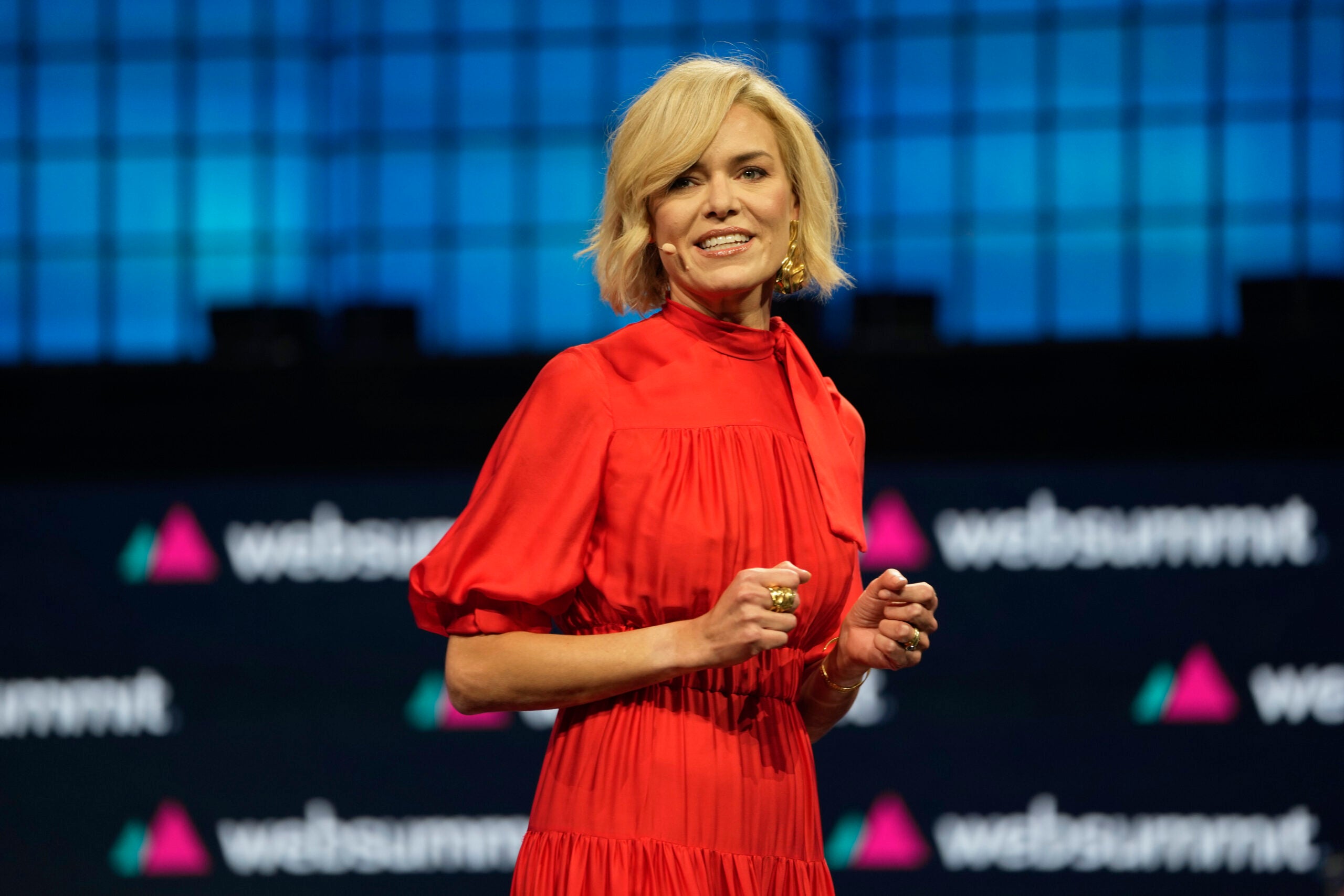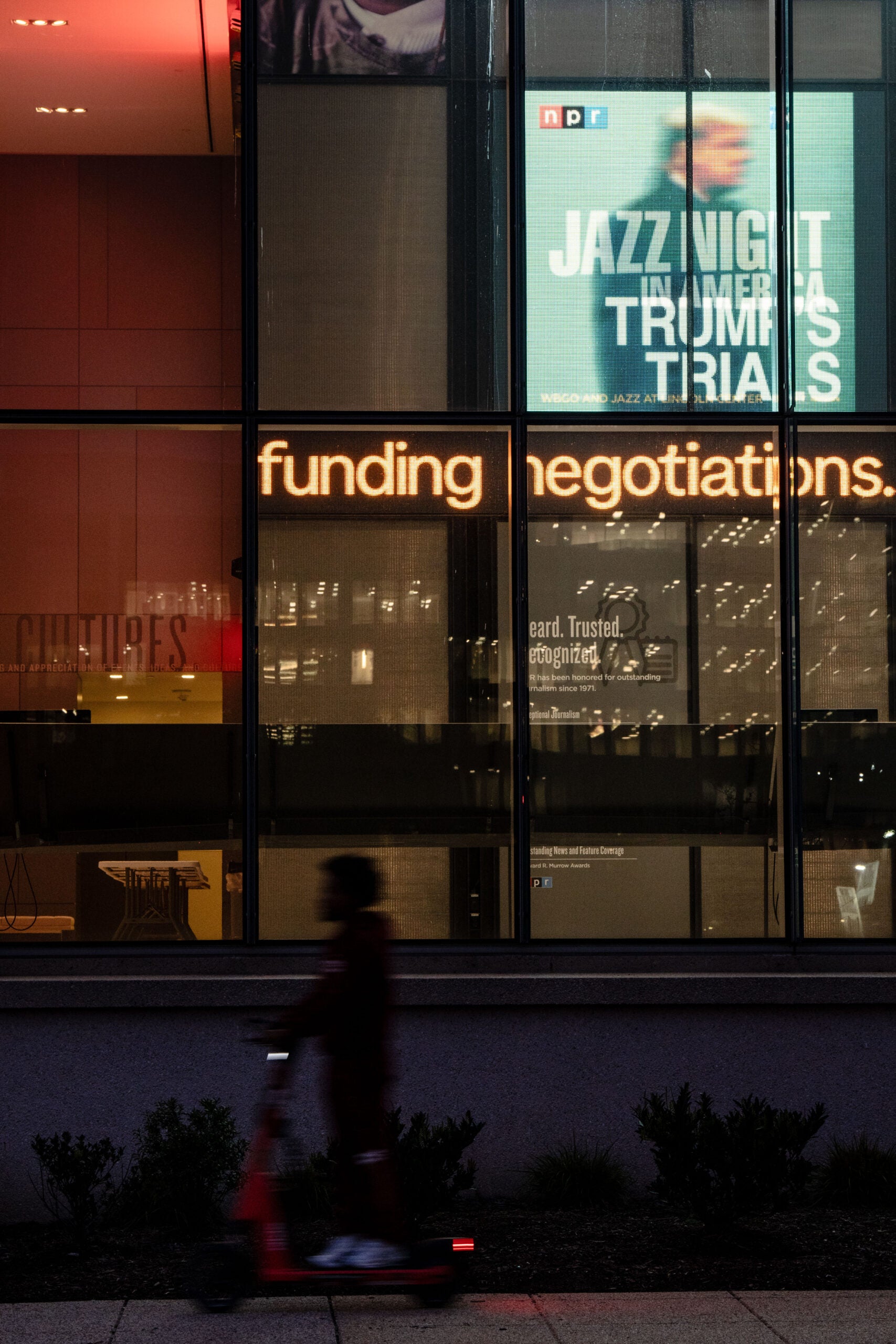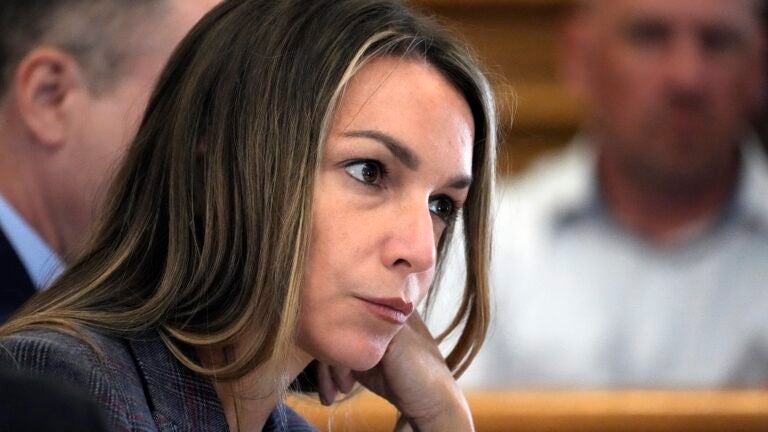Inside the crisis at NPR
Listeners are tuning out. Sponsorship revenue has dipped. A diversity push has generated internal turmoil. Can America’s public radio network turn things around?

NPR employees tuned in for a pivotal meeting late last year for a long-awaited update on the future of the public radio network.
After many tumultuous months, marked by layoffs, financial turbulence and internal strife, they signed in to Zoom hoping to hear some good news from NPR’s leaders. What they got instead was a stark preview of the continued challenges ahead.
“We are slipping in our ability to impact America, not just in broadcast, but also in the growing world of on-demand audio,” Daphne Kwon, NPR’s chief financial officer, told the group, according to a recording of the meeting obtained by The New York Times.
For the past two weeks, turmoil has engulfed NPR after a senior editor assailed what he described as an extreme liberal bias inside the organization that has bled into its news coverage. The editor, Uri Berliner, said NPR’s leaders had placed race and identity as “paramount in nearly every aspect of the workplace” — at the expense of diverse political viewpoints, and at the risk of losing its audience.
The accusations, leveled in an essay published in an online publication, The Free Press, led to a deluge of criticism from conservatives, including former President Donald Trump, who called for the network’s public funding to be pulled. The essay also generated vociferous pushback internally, with many journalists defending their work and saying Berliner’s essay distorted basic facts about NPR’s coverage.
But NPR’s troubles extend far beyond concerns about its journalism. Internal documents reviewed by The New York Times and interviews with more than two dozen current and former public radio executives show how profoundly the nonprofit is struggling to succeed in the fast-changing media industry. It is grappling with a declining audience and falling revenue — and internal conflict about how to fix it.
NPR’s traditional broadcast audience, still the bulk of its listenership, is in long-term decline that accelerated when the pandemic interrupted long car commutes for millions of people. The network has begun to sign up digital subscribers who pay for ad-free podcasts, but that business has lagged far behind that of its competitors.
While NPR still has an audience of about 42 million who listen every week, many of them digitally, that is down from an estimated 60 million in 2020, according to an internal March audience report, a faster falloff than for broadcast radio, which is also in a long-term decline.

A yearslong push to diversify NPR’s staff, in part to lure listeners beyond its aging and predominantly white audience, hasn’t generated the listenership boost some executives had hoped for. But the effort, which NPR’s former CEO called its “North Star,” had been a point of contention within the organization long before Berliner published his essay this month.
Making matters more complicated: NPR’s unusual leadership structure. NPR’s reach is the result of its hundreds of member stations around the country, many of which both pay NPR for its shows and produce their own. But the leaders of those member stations — who control NPR’s board — often have conflicting priorities and compete with the network for donors, making changes more difficult.
Together, the challenges raise questions about the long-term vitality of NPR, one of the country’s most storied and far-reaching media organizations. More than 98% of the U.S. population lives within listening range of at least one of the more than 1,000 public radio stations that carry NPR programming, including longtime staples like “Morning Edition” and “All Things Considered.” Legions of die-hard listeners proudly carry tote bags emblazoned with the nonprofit’s three signature letters.
“I believe that public radio has five to seven years to re-imagine itself before it’s simply unsustainable,” said Eric Nuzum, a former NPR executive and co-founder of the audio consulting and production company Magnificent Noise. “And they can’t take two or three years of that time debating a business model.”
An NPR spokesperson, Isabel Lara, said in emails to The New York Times that the organization had confidence in many of its recent initiatives, including its podcast subscription business, its push to diversify its staff and its efforts to reach listeners digitally. Lara said that three of NPR’s podcasts — “Up First,” “Fresh Air” and “Wait Wait … Don’t Tell Me!” — were in Apple’s top-10 subscriber podcasts.
“Our focus on the North Star has led to increased diversity in our content: the voices on the air, the sources our journalists go to, the broader range of topics and issues discussed in our shows,” Lara said. “We want to reach people where they are.”
The organization is now led by Katherine Maher, who started as NPR’s CEO last month after leading the Wikimedia Foundation, which supports the online encyclopedia Wikipedia. Maher had no professional experience in the news industry. In a January news release announcing her hire, NPR’s board said that Maher would help the network “reach audiences on new and existing platforms.”
Maher was criticized this month for social media posts she published before joining NPR, including one from 2018 that called Trump a racist and expressed support for numerous progressive causes, including Black Lives Matter. NPR has said she wrote those posts as a private citizen expressing her free speech rights, and that she oversees the organization’s business, not its editorial product.

In a statement, Maher said that NPR was not alone in facing a challenging media environment and pledged to use its distinctions to its advantage.
“Its differences — as a broadcaster, a nonprofit, a federated network — serve both as unique challenges and remarkable differentiators,” Maher said. “The obstacles we face are real, but the quality of the programming and the integrity of the mission are also indisputable. They offer a strong basis from which to build our future.”
First expansion, then declines
NPR sprang up in Washington in 1970 as an alternative to commercial media, less than three years after President Lyndon Johnson signed a bill that created the Corporation for Public Broadcasting, a taxpayer-funded organization that partially funds both a nonprofit radio network, NPR, and a nonprofit TV network, PBS.
The founding documents of NPR stipulated that its board of directors would include many representatives from member stations, along with the general public. The goal was to ensure that the board always had the best interests of its local stations at heart.
A network of 88 charter stations banded together, teaming up to bring listeners across the United States stories including the Senate hearings on the Vietnam War. NPR began making “newsmagazines” for member stations — starting in 1971 with the first broadcast of “All Things Considered” — and received grants from the Corporation for Public Broadcasting.
Before long, NPR exploded. By 1983, it had nearly 300 stations and about 8 million listeners. Today, more than 1,000 people work at NPR, and its audience of millions makes it one of the most influential media companies in the world.
But that growth has reversed course in recent years.
“News fatigue, digital transformation, and increased competition continue to drive audience declines across platforms,” the report said.
Conflicting priorities
To some degree, those recent declines have been balanced out by the emergence of a relative bright spot: the rise of podcasting.
Public radio podcasts, with their distinct blend of reporting and narrative, quickly won over millions of listeners and pioneered a new format. “Serial,” a gritty whodunit from the makers of the public radio show “This American Life,” became a breakout hit, leading to spinoffs and illustrating the promise of podcasting for nonprofit radio organizations.
Today, NPR is the fourth most popular podcast publisher globally, according to Podtrac, with nearly 113 million downloads in March alone. But it also faces many new competitors, including The New York Times, which bought “Serial” in 2020 to bolster its own growing audio business.
Corporate sponsorships — public radio speak for advertisements — grew by nearly 70% in the five years before 2022, according to filings from NPR, generating more than $135 million that year. The vast majority of that growth comes from podcasting, which allows NPR to tap into a younger and growing audience.
But that business took a major hit last year in an uncertain advertising market. In 2023, NPR generated $101 million in corporate sponsorship revenue, a decrease of about 25% from the previous year.
The growth of NPR’s podcast business has also led to tension with its member stations. If local advertisers can reach public radio listeners directly through a podcast, why would they pay for a sponsorship on a member station? In 2022, a group of executives at member stations sent a letter to NPR’s CEO at the time, John Lansing, expressing concern that the organization’s growing portfolio had “caused distress on local stations’ sponsorship revenue.”

“If unaddressed, it will continue to impact the health of stations in an increasing way,” said the letter, which was signed by executives at many of the biggest NPR stations.
Adoption of NPR’s podcast subscription bundle, NPR+, has also lagged behind competitors’ subscription businesses. According to internal documents obtained by The New York Times, about 51,000 people subscribe to NPR+, as of early March, and the product has generated about $1.7 million in revenue since it was introduced in November 2022. Users can pay $8 monthly for a bundle of podcast extras or subscribe to individual shows for $2.99 per month.
In late 2022, NPR began selling fewer sponsorships, part of an overall downturn in the ad market. So, for the first time since the COVID-19 pandemic, Lansing and his team planned for NPR’s revenue to remain flat in 2023. He wasn’t prepared for what happened next. When January arrived, the “bottom just fell out” of the digital ad market, he said in an interview. Sponsorships fell $34 million compared with the previous year.
“That’s 10% of our revenue, and you can’t go back and get it,” Lansing said. “It’s like an airplane that takes off with half the seats sold — once it’s gone, it’s gone. ”
The scope of the shortfall became apparent early in 2023, when NPR’s leadership decided to cut about 100 positions to help make up for a $30 million budget deficit.
An uncertain future

In May 2022, the board met to discuss taking a big step: an ambitious membership effort that they hoped would be a big part of NPR’s future.
The nonprofit was planning to create the NPR Network, a service that would allow listeners across the United States to donate directly to NPR. In doing so, the board was wading into an issue that had generated tensions between NPR and its member stations for decades: fundraising.
For years, NPR’s rules restricted the ways it could ask listeners for money directly. Those solicitations were supposed to be done with participation from local member stations.
Now, the board planned to suspend that rule so that NPR could ask avid public radio listeners to donate directly to the NPR Network.
There was some initial disagreement on the board over the NPR Network, according to people familiar with the meeting. Some of the directors said NPR needed to do a better job of reaching listeners directly. Others urged caution, warning that the proposal could interfere with fundraising efforts at local stations.
After much back and forth, the board held a special session in June for a formal vote on whether to remove the rule. Ultimately, the board voted to suspend the rule, but agreed to revisit the decision in the coming years, setting up yet another debate.
‘The North Star’

Like many companies that committed themselves to confronting racial inequality in recent years, NPR put an ambitious action plan in place. Its commitment to diversity — which Lansing called NPR’s “North Star” — would be not only a moral imperative but a foundation of its business strategy.
NPR’s leaders redoubled their efforts to diversify their audience and workforce and closely tracked metrics for each. They added podcasts aimed at people of color and younger listeners. They promoted people of color to high-profile reporting and hosting jobs. All of these moves were meant to ensure the nation’s public radio network would remain competitive as the country’s population continued to grow more diverse.
So it came as a disappointment to some people on NPR’s board last fall when they were presented new internal data showing their efforts hadn’t moved the needle much with Black and Hispanic podcast listeners.
Black listeners made up roughly 11% of NPR’s audience in the second quarter of 2023, unchanged from roughly 11% from the same period in 2020, according to the data. The data further showed that the share of Hispanic listeners went up by only 2 percentage points since 2020, to account for 16% of the total audience. One 2020 survey, from the Pew Research Center, found that of the people who named NPR as their main source for political and election news, 75% were white, more than any other outlet except Fox News.
NPR’s efforts to diversify itself and its audience didn’t always live up to the expectations of the people who worked there. During a round of layoffs last year, NPR cut “Louder Than a Riot,” a hip-hop podcast that examined Black and queer issues. After that decision, the show’s editor, Soraya Shockley, who had previously worked at the Times, grilled Lansing during an employee question-and-answer session about why the show had no dedicated budget, pointing out the lack of resources supporting content that furthered diversity, equity and inclusion, or DEI.
“How are we supposed to support diverse programming — actually commit to DEI, and make it not a folly — when this company seems scared to talk about money when it is not a $30 million deficit?” Shockley asked. In a statement, NPR said that the second season of “Louder Than a Riot” had comparable marketing support to other podcasts at the network; Shockley said they were never shown a marketing budget.
Later on the call, after Lansing urged employees to be more mindful of “civility” in their questions, an NPR employee wrote in an instant-messaging chat accompanying the conversation that the word ‘civility’ is often used as a cudgel against people of color, calling the language choice “racist.”
After the meeting, Shockley filed a human resources complaint against Lansing, saying his remarks about civility amounted to “dog-whistle racism,” according to a person with knowledge of the exchange. The complaint against Lansing was referred to an outside law firm, which did not recommend any punitive action.
Lansing, who announced his retirement last fall, declined to comment on the interaction.
Still, some critics of NPR believe NPR’s “North Star” strategy has failed for a completely different reason: It has not taken ideological diversity into account. Tim Eby, who was the general manager of St. Louis Public Radio until 2020, said in an interview that while it made sense for NPR to seek an audience that looked more like the country, he wasn’t sure its approach was the right one. And its story selection has on occasion left it open to criticism that its focus on race and identity has affected its news judgment. There have been stories, for instance, on how to “decolonize your bookshelf” and “thin privilege.”
“The demographics of the country being what they are, it goes without saying that if you want to have a sustainable business going forward, you have to reach new audiences,” he said. “I think the question is how you’re doing that. I think they’ve overcompensated on attempts to reach audiences that are not going to listen,” he added.
(Eby has a personal stake in the debate. An anonymous post on the Medium website accused him of presiding over a workplace that was unfair to employees of minority groups. The station replaced him. He has denied those claims and is suing for defamation.)
Berliner’s criticism this month of NPR’s North Star strategy hasn’t swayed the network’s leaders. In a statement, NPR said it was committed to a more diverse staff and on-air voices. The network pointed to its large audiences on social media platforms like Instagram, TikTok and YouTube as bright spots.
Many employees also pushed back against the claims in Berliner’s essay, both in public and internally. The staff of “Morning Edition” set aside more than a half-hour of one daily meeting to discuss his remarks.
Bill Siemering, an early leader at NPR who wrote a statement of purposes in 1970 that the nonprofit continues to use today, said in an interview that NPR’s mission was as important today as when he first put pen to paper.
“There’s a place in society for a independent source of information that reflects the culture in a meaningful way where all the voices are heard, and where there is intentional programming to help solve some of the most critical problems facing America,” Siemering said.
This article originally appeared in The New York Times.








Conversation
This discussion has ended. Please join elsewhere on Boston.com